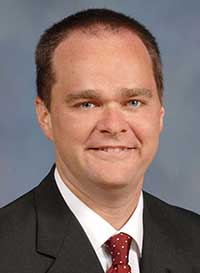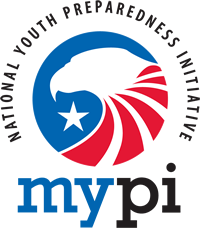Preparedness initiative gains national attention

Ryan Akers
STARKVILLE, Miss. -- A Mississippi State University youth initiative is joining an elite group of programs that focuses on emergency and disaster preparedness in communities across the nation.
The Federal Emergency Management Agency, American Red Cross and U.S. Department of Education created the national strategy for youth preparedness education. They have invited a Mississippi program to partner with dozens of programs that follow key emergency preparedness strategies.
“The Mississippi Youth Preparedness Initiative, or MyPI, aligns well with a national strategy to make communities more prepared for potential disasters,” said Ryan Akers, initiative coordinator and assistant Extension professor in the MSU School of Human Sciences.
The strategies include elevating youth preparedness learning programs, evaluating existing programs, creating school preparedness opportunities, designing sustainable programs, and connecting young people and first responders.
“It says a lot about MyPI to be included with other prominent youth programs as we work to prepare communities for disasters,” Akers said. “The program has been going for just over a year, and we expect to be in about half of the state’s counties soon.”
The MSU Extension Service and Mississippi Citizen Corps promote MyPI in communities across the state. The curriculum is based on Community Emergency Response Training programs, with several additions for teens. MyPI includes CPR and defibrillator training and a technology track. Participants also explore career options.
Akers said the “Prep+6” portion of MyPI was a strong drawing card for the partnership.
“Prep+6 requires participants to develop emergency kits and emergency communication plans for their family and six others,” he said. “This comprehensive service project will reach thousands of families across the state in the coming years.”
Monticello Mayor Dave Nichols, one of two Citizens Corps trainers qualified to certify trainers in Mississippi, has been working with Akers to train the leaders for the youth programs.
Nichols said communities always will have more citizens than responders, and bystanders are often the first to render aid in disasters. Safety is a priority for trainers, who in turn teach safety-first concepts to young participants.
“We want to teach youth how to recognize a hazardous situation and to stay away from those situations -- leave that response to the professionals,” he said. “Each responder needs to learn how to analyze a situation. Their priorities should always be for themselves and their buddies.”
Participants learn how to assess victims’ needs and triage, or sort, them into categories, giving priority to those who have problems with the three potential killers: bleeding, shock and breathing trouble. Other basic lessons teach them about the chain of command in a disaster, the dangers of “self-deployment” and the value of a buddy system.
“There are no lone rangers in disaster response,” he said.
For more information on MyPI, contact local Extension offices or visit the website at http://mypi.msucares.com/.
-30-
Writer: Linda Breazeale
March 19, 2015
Contact: Dr. Ryan Akers, 662-325-5914
Publications may download image at 300 dpi


